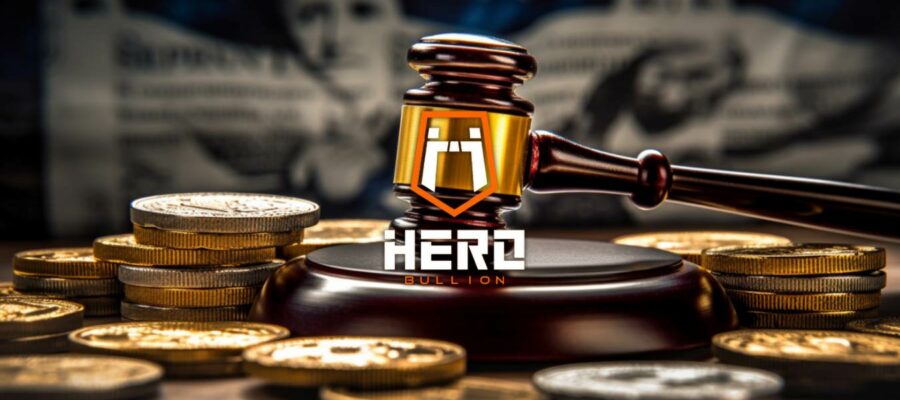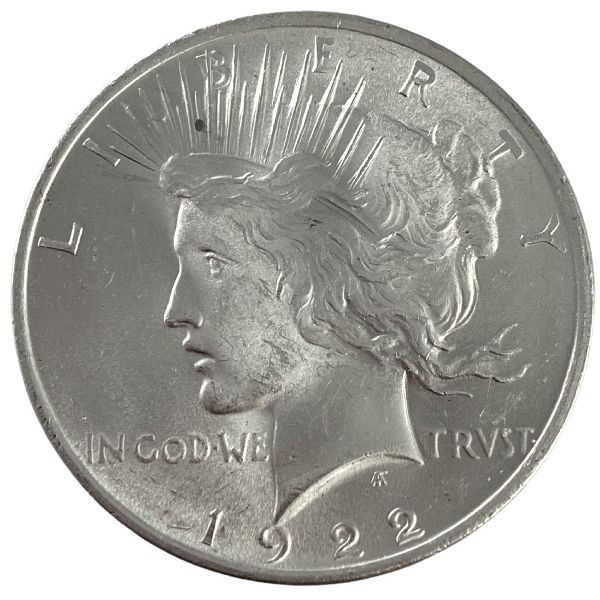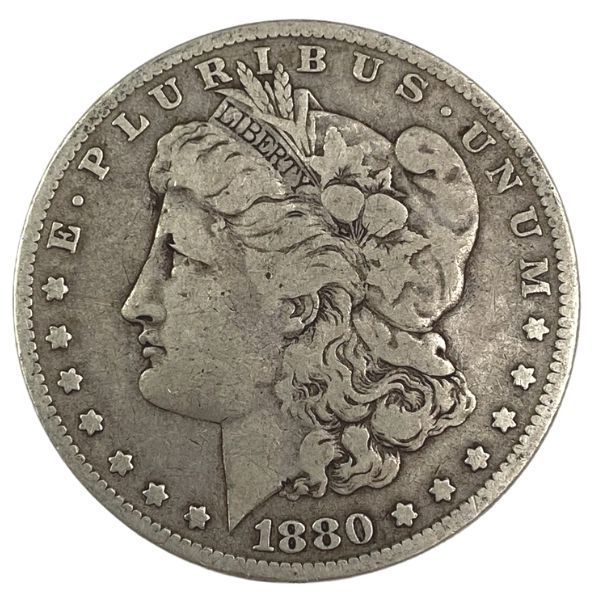History Lesson: What is the Crime of 1873?

For a period in United States history, silver stackers could have their bullion converted into legal tender silver coins by the United States Mint. Today, this is an unimaginable concept. Imagine if you were able to take pure silver and have it turned into an American Silver Eagle!
This concept, which came to be known as the “free silver” policy, was the acting philosophy of the United States government for decades. But something happened in 1873 that would have unprecedented consequences for the United States economy.
When the United States ended the free silver policy, they set off a chain reaction that provoked mass outrage, revolutionized our monetary system, and even led to the creation of a popular new political party.
Today, we’re taking a look at the Crime of 1873, a controversial law that fundamentally altered the future of American coinage and economics. What is the Crime of 1873, and how did it have such an enormous impact on our country? Let’s take a look at the history and vast impacts of the Crime of 1873.
What is the Crime of 1873?
The “Crime of 1873” is a term used by critics to describe the Coinage Act of 1873. Although the law was contentious among Congressional leadership and took around three years to pass, President Ulysses S. Grant signed the act into law on February 12, 1873.
Like most coinage legislation, this law included quite a few separate stipulations and mandates that the government imposed on the U.S. Mint.
Its most distinctive – and controversial feature involved the end of the “free silver” policy. This had been the acting policy of the United States Mint for decades. Since the Mint Act of 1837, this system allowed citizens to turn in pure silver to the U.S. Mint in exchange for official legal tender silver coins.
When the Coinage Act of 1873 passed, the U.S. Mint no longer offered to turn silver into silver dollars and other coins. The public outrage was swift, and many opponents of the law called it the “Crime of 1873.”
Public Reactions to the Law
The law was highly controversial. In the United States, exchanging bullion for silver was extremely popular. When silver prices were low and the value of U.S. currency was high, some savvy investors could convert their bullion into currency in order to add value to their investment portfolios.
To some silver stackers, the law was clearly the beginning of the end for the silver standard in the United States. They weren’t wrong, either. Though the law banned the U.S. Mint from minting dollar coins with silver provided by citizens, they were still allowed to convert gold bullion into legal tender coins.
A vast public divide opened up, resulting in one of the most enduring and controversial political issues of the 19th century.
History of the Crime of 1873
Let’s start with the basics. You already know what the “Crime of 1873” is. In short, the legislation ended the decades-old tradition of the U.S. Mint converting silver bullion into usable, legal tender silver coins.
To understand the concept of the Crime of 1873, you’ll need to have a solid grasp of the free silver policy, the intense senatorial debate that led to the law’s passage, and the enormous controversy that followed.
“Free Silver” Explained
Historians generally use the term “free silver” to refer to a monetary policy where a government produces a theoretically unlimited number of silver currency coins. It might sound strange to modern readers. After all, modern silver bullion coins from the U.S. Mint are produced in set, limited quantities.
Under the free silver system, silver stackers were allowed to have any amount of silver converted into legal tender coins from the U.S. Mint. While the United States technically didn’t produce infinite silver coins, this policy meant that the total number of silver coins minted would vary based on how many citizens chose to take the mint up on this offer.
As you might have guessed, this system was liable to cause a number of problems. Congress noticed the potential flaws of the free silver status quo; what followed was a long, drawn out controversy between political figures over the future of American coinage.
Intense Senate Debates
The law was controversial when it was released to the public. However, the real controversy surrounding the Crime of 1873 started long before President Ulysses S. Grant signed the bill into law.
In fact, historians note that Congress took nearly three entire years to get the law passed. Intense debate crossed over multiple party lines. Many Senators feared the implications of ending bimetallism, the policy of having currency backed by not one – but two – separate precious metals.
A Massive Controversy
The bill didn’t become a major subject of public discourse until it finally passed in 1873. During the three years of its contentious debate in the United States Congress, it was seldom mentioned by political leaders or media sources.

But once the bill was signed into law and made public, it became a national issue. Newspapers, public speakers, and political leaders scrambled to take sides. As we’ll discuss later on this page, the Crime of 1873 even led to the creation of a new, powerful single platform political party.
Why Did the U.S. Government End Free Silver?
The United States ended the policy of ‘free silver’ for a few different reasons. During public debates about the legislation, some opponents argued that it was a clear attempt to put the United States on the gold standard.
Before the Crime of 1873, the United States operated on a bimetallic system. This means that our currency was backed by stores of both gold and silver. When either metal declined or increased in value, the buying power of the United States Dollar shifted as well.
Impacts of the Crime of 1873
The Crime of 1873 was highly controversial and changed the landscape of American economics in two main ways. First, it ended bimetallism, the policy of having more than one metal back the value of a paper currency. Second, the Crime of 1873 helped set the groundwork for the United States gold standard.
Bimetallism Movements in the United States
Bimetallism refers to a precious metal standard where two different metals are used to back the value of a currency. Since the passage of an earlier mintage law in 1837, the United States used both silver and gold in its currencies.
Bimetallism became the subject of intense, extended debate, both in Congress and the general public. To some investors, the Crime of 1873 was a secretive, backhanded attempt by the government to force the United States into the gold standard.
The Gold Standard Begins
Again, opponents of the bill were not entirely wrong. According to historical records, most Congressional debates concerning the Crime of 1873 rarely mentioned bimetallism directly. Doing so would have likely resulted in a larger public controversy prior to the passage of the bill.
However, it’s clear that this was at least one of the act’s primary objectives. Removing free silver limited the supply of silver coins, but the act did nothing to dismantle the existing gold standard that the U.S. economy was built on.
As a result of the Crime of 1873, gold was really the only metal left standing. While the U.S. would continue to produce silver coins, gold became the only metal that consumers could have turned into legal tender coins by the U.S. government.

The gold standard would persist for several more decades, before its gradual decline began in 1933 under the leadership of FDR.
Introducing the Silverites
The collapse of the bimetallic standard wasn’t the only major impact that followed the passage of the “Crime of 1873.” The controversial law also resulted in the emergence of a new and powerful political movement. Called the “Silverites,” these advocates fought tooth and nail for a return to tradition and the repeal of the Coinage Act of 1873.
What is a Silverite?
Silverites were part of a larger political movement that advocated for both free silver and the bimetallic standard. The political movement even had a slogan – “16 to 1.” They frequently mentioned the phrase in speeches and meetings, emphasizing the historical ratio of gold’s value to silver’s.
The term itself refers to adherents of the political movement, but Silverites belonged to almost every major political party. In particular, the Crime of 1873 led to the creation of two new parties: the Silver Party and the Silver Republican Party.
It’s hard to believe that a single piece of legislation was impactful enough to spur the start of two brand new political parties – but it’s true! Although it seems strange to modern readers, the collapse of the bimetallic standard in the United States was one of the most dominating political issues of the 19th and 20th centuries.
The Cross of Gold Speech
The Crime of 1873 also brought us one of the most impactful, effective political speeches in the history of the United States. The year was 1896. Democrats met at the Democratic National Convention (DNC) to figure out who would be their next presidential nominee.
William Jennings Bryan entered the convention as a candidate with very little support. While he was considered by some to be a dark horse, his number suggested that he was unlikely to win the nomination.
He took the stage at approximately 2 pm and spoke for thirty-five minutes about the dangers of mandating the gold standard in the United States. He warned advocates of the Crime of 1873 that they “shall not crucify mankind upon a cross of gold!”
By the end of the speech, he had electrified the convention to such an extent that they actually carried him on their shoulders! When the voting concluded, he had secured the Democratic Party’s nomination for President.
Though Bryan eventually lost the presidential election to William McKinley, this speech remains one of the most effective in our country’s history. And to think, all of this happened because of the Crime of 1873!
The Future of the Free Silver Movement
Free silver as a monetary mint policy is unlikely to return anytime soon. The United States Mint produces a set, limited number of silver bullion coins each year. U.S. legal tender circulation coins also don’t contain pure silver, which would make it harder for any actual “free silver” movement to exist in the future.
This is probably good news for silver stackers. The limited mintage of American silver coins makes them popular collector’s items. If it weren’t for the Crime of 1873, the silver bullion market would look quite a bit different than it does today.
Is the U.S. on a Gold/Silver Standard Now?
The U.S. is not on any kind of precious metal standard. Our currency is considered fiat money, which means that its value is primarily determined by the faith of consumers that their bills are backed by the existing United States government.
Some projects in the precious metals industry have attempted to bring back a gold standard. Our favorite is the Goldback. These gold notes are usable currency that is spendable at businesses all across the country. The best part? They feature beautiful designs and contain actual gold bullion.
Other precious metal currencies have attempted the same thing, but few have experienced the explosive success we’ve seen with Goldbacks.
For now, there is no gold standard in the United States. Richard Nixon took the U.S. off the gold standard officially in 1971, and the vestiges of the silver standard were eliminated with the Crime of 1873.

Final Thoughts: What is the Crime of 1873?
What is the Crime of 1873, and why is it important? In addition to eliminating the bimetallic standard that the U.S. economy operated on for decades, this essential piece of legislation also spurred the creation of numerous political parties – and brought us one of the most impactful speeches in the history of the United States.
You might also be interested in:
About The Author
Michael Roets
Michael Roets is a writer and journalist for Hero Bullion. His work explores precious metals news, guides, and commentary.
